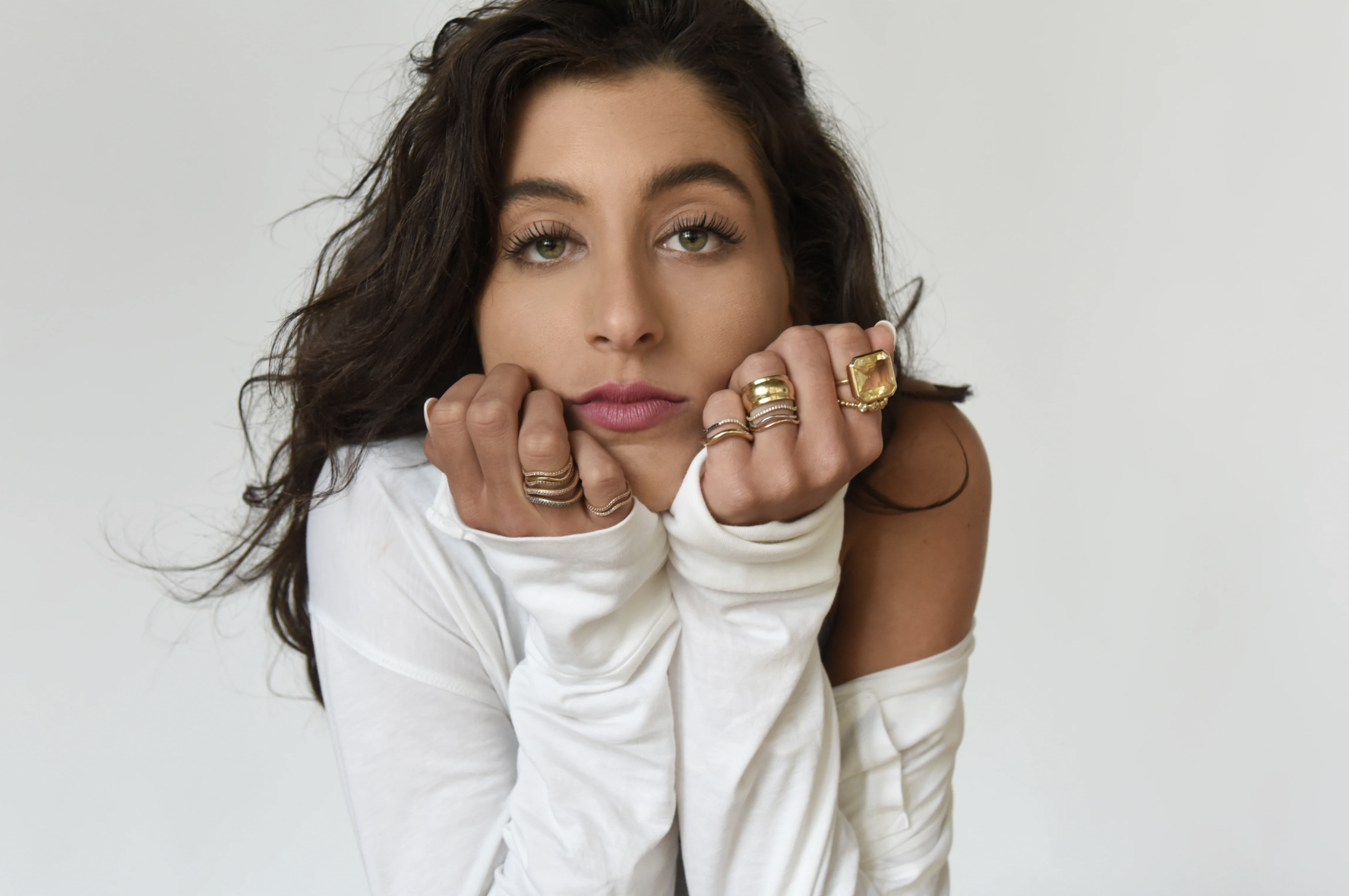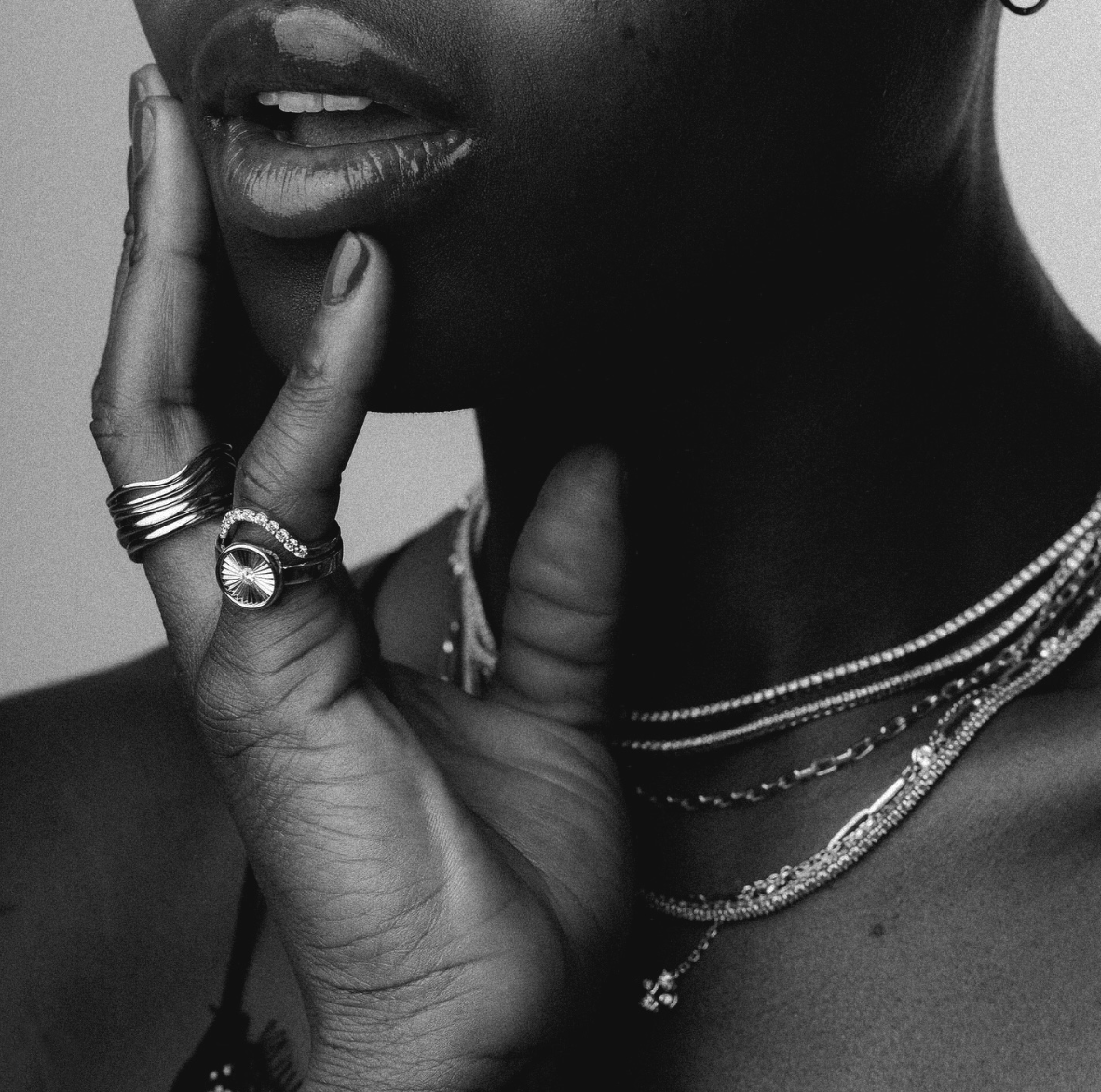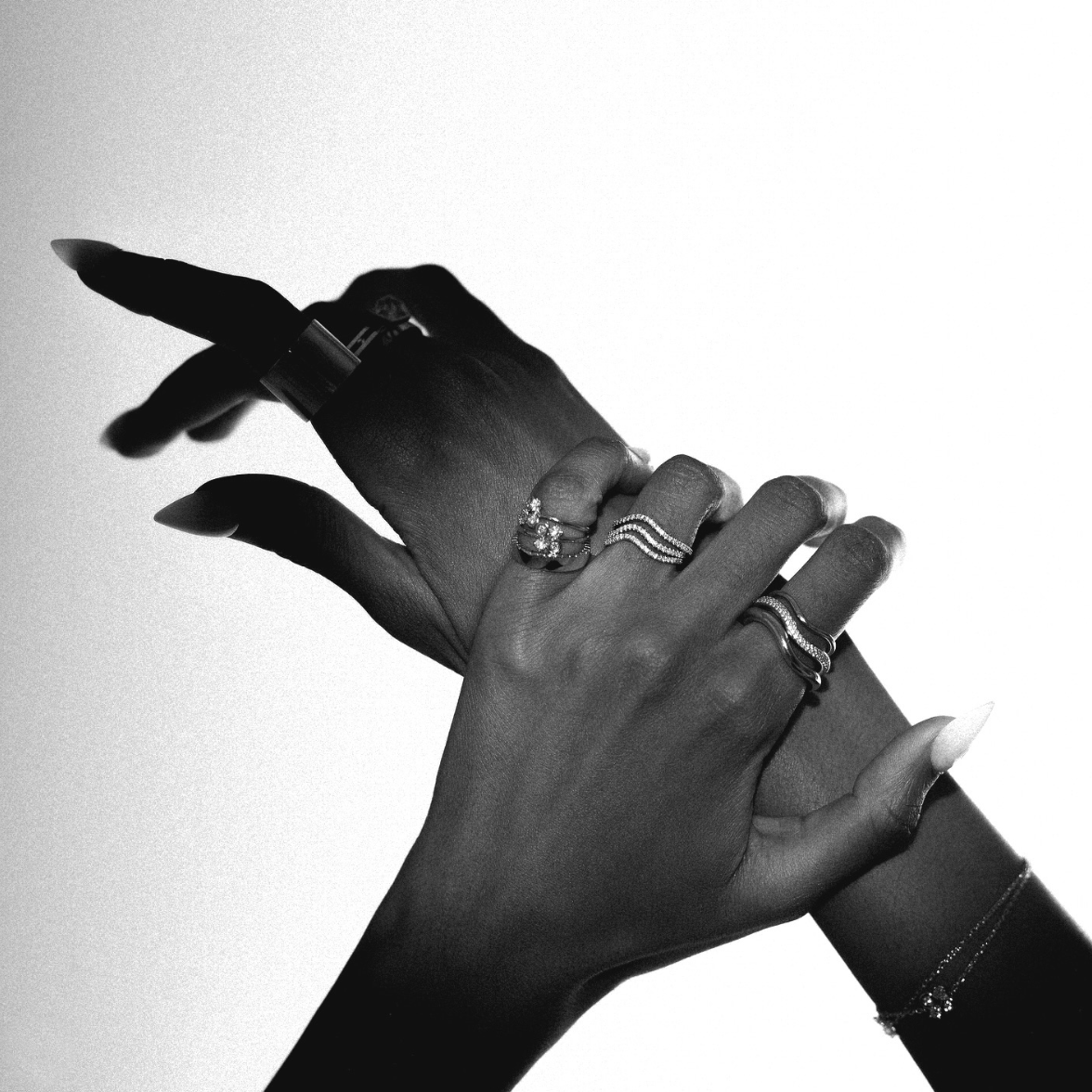Designer Spotlight: Interview with Jessica Klein, Founder of Bondeye Jewelry
This week I interviewed my friend Jessica Klein, founder of Bondeye Jewelry. I’ve worn her pieces almost every day for several years—they’re my staples, and I regularly receive compliments on them. I’ve also referred several clients to her, and they’ve all been happy with their jewelry. What I appreciate is that she makes beautiful pieces that are accessible, and she’s genuinely a good person I enjoy supporting.
Here she answers a few questions on why 14k gold, how she keeps jewelry accessible, and ways people can be sustainable.
Founder and Designer, Jess Klein
How did you get started in jewelry?
"I started designing jewelry as a hobby after my time living in Australia. While living abroad, I realized I wasn’t locked into a single career path. I could pursue something else I genuinely enjoyed. I had just finished university and had been working for the Milwaukee Bucks; I was creating pieces for fun—gifts for friends and helping people design jewelry they really loved. I moved to Milwaukee, working for the Milwaukee Bucks, when I decided to transition more seriously into jewelry, and I quickly discovered how much I loved it. Fun fact: the name Bondeye actually comes from my time living in Australia."
What’s your mission for the brand?
“Well, the vision has evolved over time—I’ve been doing this for 10 years. Originally, I was designing for younger women, and I wanted to make fine jewelry accessible for those just starting out. As the brand evolved, so did the range of our designs and the demographic we serve, which now spans a much broader audience and includes more luxury pieces.
Even so, accessibility remains at the heart of what we do. My goal has always been to give a woman a place to begin her collection at an affordable price point, and as she moves through different stages of life, she can expand that collection with additional pieces. All of our jewelry is designed to be worn every day—and to be worn together. Pieces are stackable and layered so you can mix and match multiple items at once."
What does accessibility mean to you?
"For me, accessibility means making beautiful, high-quality jewelry that doesn’t feel intimidating or out of reach. That’s why I mostly focus on 14k gold—it’s solid, durable, and fine jewelry by industry standards, but more affordable than 18k or 24k and ideal for everyday wear.
I also use semi-precious gemstones for greater variety and price flexibility, while partnering with top manufacturers to ensure exceptional craftsmanship. My goal is to bring in as many luxury elements as possible—through design, detail, and materials—without pushing prices beyond reach. If I only worked with the rarest stones and higher-karat gold, the entry point would be too high. By keeping pieces competitively priced, we can offer entry-level styles starting around $900."
How has the increase in gold prices impacted your business?
"When I started, gold was around $1,800 an ounce. Now it’s $3,600 and still climbing. To stay true to our core values, we did have to tweak prices and shrink our margins—that was a deliberate choice I made because maintaining accessibility is more important to me than maximizing profit.
We’ve also started producing more pieces locally to help offset tariffs and shipping costs. Some of our design and production now happens in New York, where we’re based, which helps us stay efficient while keeping prices within reach for our customers."
How can a customer know if something is good quality?
"One of the easiest ways for customers to check is by looking for stamps that indicate the metal’s authenticity. For example, 14k gold is marked with ‘14k’ or ‘585,’ and sterling silver is marked ‘925.’ These stamps are usually found inside rings, on necklace clasps, or inside bracelets. You’ll see the same markings on vintage pieces too—it’s a standard that’s been used for more than a century.
In-house, we take quality very seriously. We work with consultants who are experts in fine metals and have even tested sample pieces by melting them down to verify the gold content. Weight can also be a clue. Jewelers use precise scales to verify whether a piece matches the expected weight for its metal and design—another way to confirm authenticity. I also wear prototypes myself to see how they hold up over time and ensure they’re durable enough for everyday wear."
Why do you prefer working with 14k gold?
"I chose 14k gold because it strikes the right balance. 9k-karat gold doesn’t have enough gold content to really qualify as fine jewelry, while higher karats like 18k or 24k are softer and less durable. Fourteen-karat gold has a beautiful warm yellow color, it’s durable enough for everyday wear, and it’s still considered ‘fine’ because the majority of the alloy is gold—58.5% to be exact. For me, it’s the perfect metal for jewelry that’s meant to be worn and loved every day."
image via @bondeyejewelry
When it comes to building a collection, how do you decide what’s worth investing in? Even with something as small as a stud, is there value in choosing a luxury version?
"I’d suggest starting with pieces that have durability, functionality, and weight. We do sell dainty studs and delicate earrings, and there’s definitely a customer for them (me included), but if you’re just beginning your collection, I don’t think those should be the first pieces you invest in. Hoops are essential, but I usually tell people to wait for sales to snag a good pair. The one exception to buying dainty early on is if someone has a metal allergy and can only wear precious metals—then it makes sense. Otherwise, I always say hold off and wait to put your money toward something more substantial."
What pieces do you think are good investment pieces?
"For everyday wear: rings, necklaces, pendants, and signet rings are all strong choices. Diamonds are always a good idea because they never lose their value, and gold has a proven track record. For long-term investments, you really can’t go wrong with a tennis necklace or bracelet. One helpful question to ask when buying from an investment standpoint is: after appraising the materials, could I repurpose this? It’s a great way to gauge whether a piece will hold its value over time."
When you say repurpose, what do you mean?
"When I say repurpose, I mean literally redesigning, melting down, or reusing the materials and stones. I think it’s such a smart and sustainable way to look at jewelry. We’ve had so many customers come in with emotional pieces—rings from past relationships, gifts they don’t connect with, or styles that just don’t feel like them anymore. We remake those into something new that makes them happy, essentially rewriting the narrative. Why waste something valuable? That’s why I think it’s important to ask yourself, when you’re buying a piece: if I don’t love it later, can I reuse it in a new way?"
Now, you mentioned that you use gemstones to help keep the brand accessible. What is the difference between precious and semi-precious?
"Precious stones are diamonds, rubies, sapphires, and emeralds. Semi-precious stones include birthstones and others that are typically less expensive. They also offer more color variety, which helps me hit the price point I’m aiming for while giving more stylistic range."
How do you feel about people buying fake jewelry?
"If a piece really speaks to you and you have strong feelings about it, go ahead and buy it. Wearing real jewelry comes with trade-offs—you sacrifice the big statement pieces, like diamond chandelier earrings, because they are expensive and less attainable. For dressing up, costume jewelry is often the easiest way to get the look you want.
If you want jewelry that’s refined but don’t want to wear fakes, consider pieces made from real materials that endure over time. Leather chokers with semi-precious stones, sterling silver, suede with gold accents, 14k gold paired with stones or beads, titanium, enamel, or semi-precious beads strung on thread—all of these offer a thoughtful, elevated alternative to cheap costume jewelry."
image via @bondeyejewelry
What are jewelry trends you’re seeing right now?
"The spotlight is on earrings. From new piercings to stacked and matched pieces, everyone’s crafting a personalized ear story. Of course, not all are using luxury pieces, but it’s something I am seeing a lot, even from my customers."
Which pieces of yours do you think are the best initial investments?
"The diamond wave ring, the josie diamond signet ring, the quartet bracelet and the julie bracelet These pieces are timeless, accessible and outlive trends.




